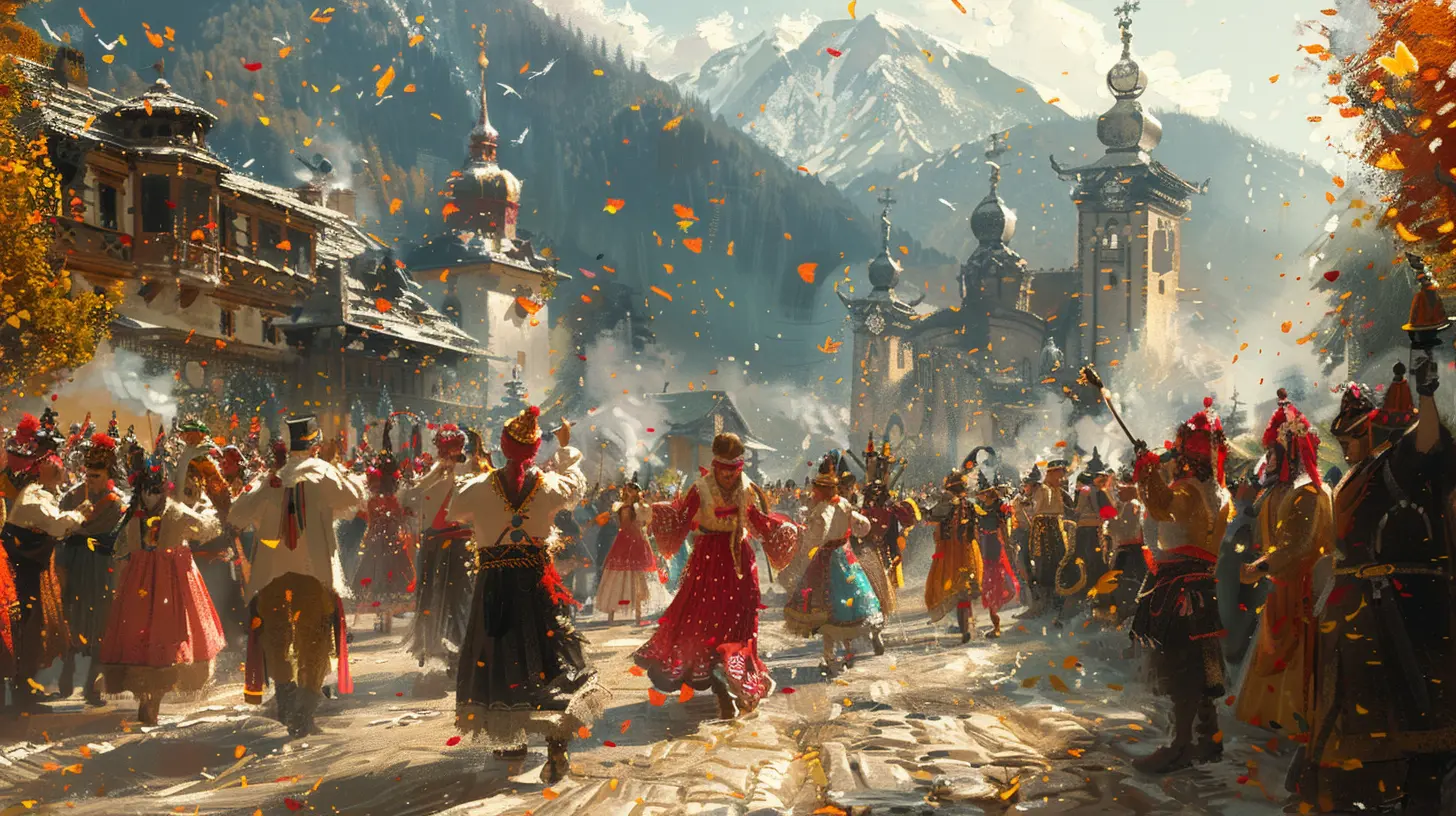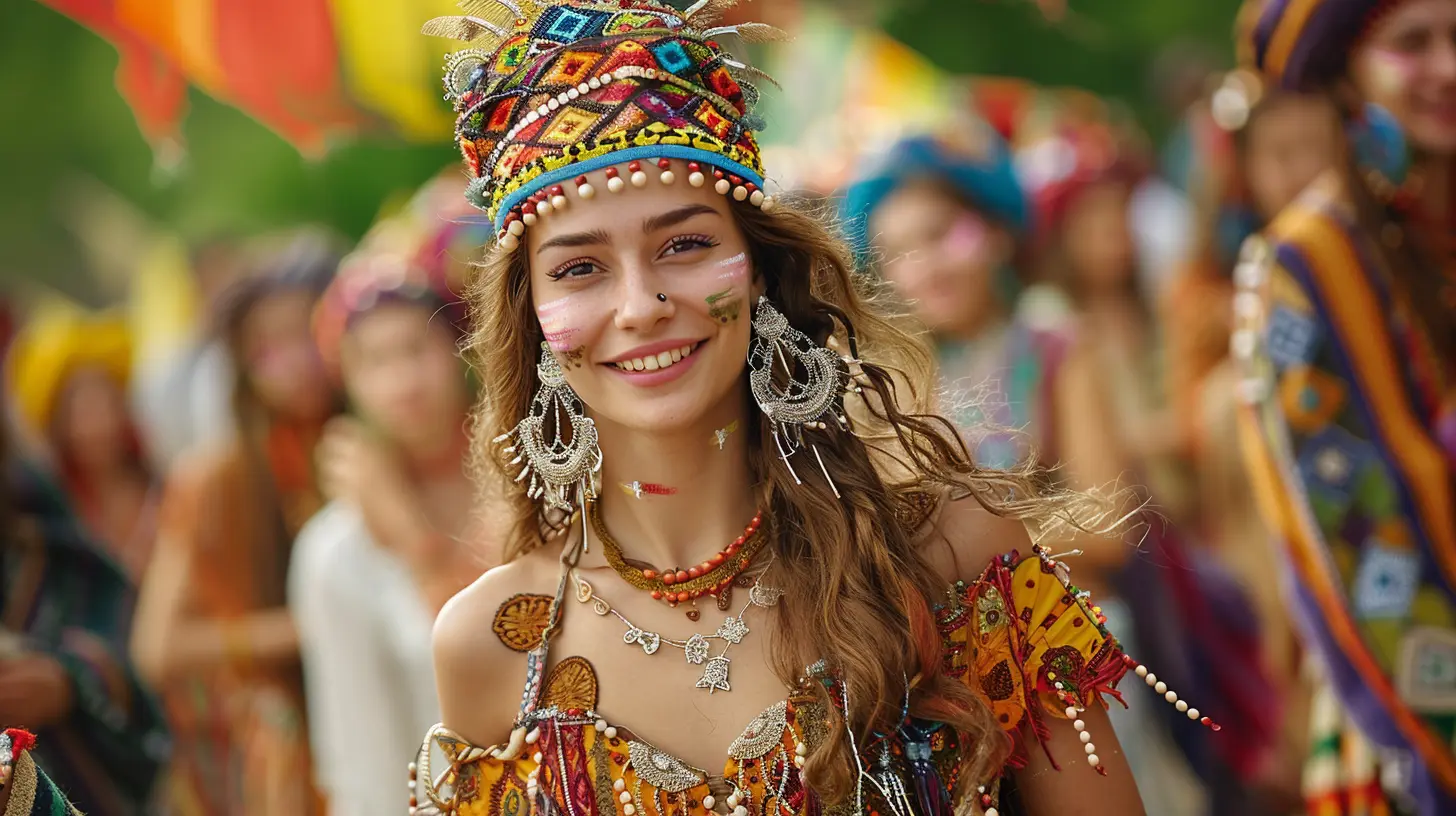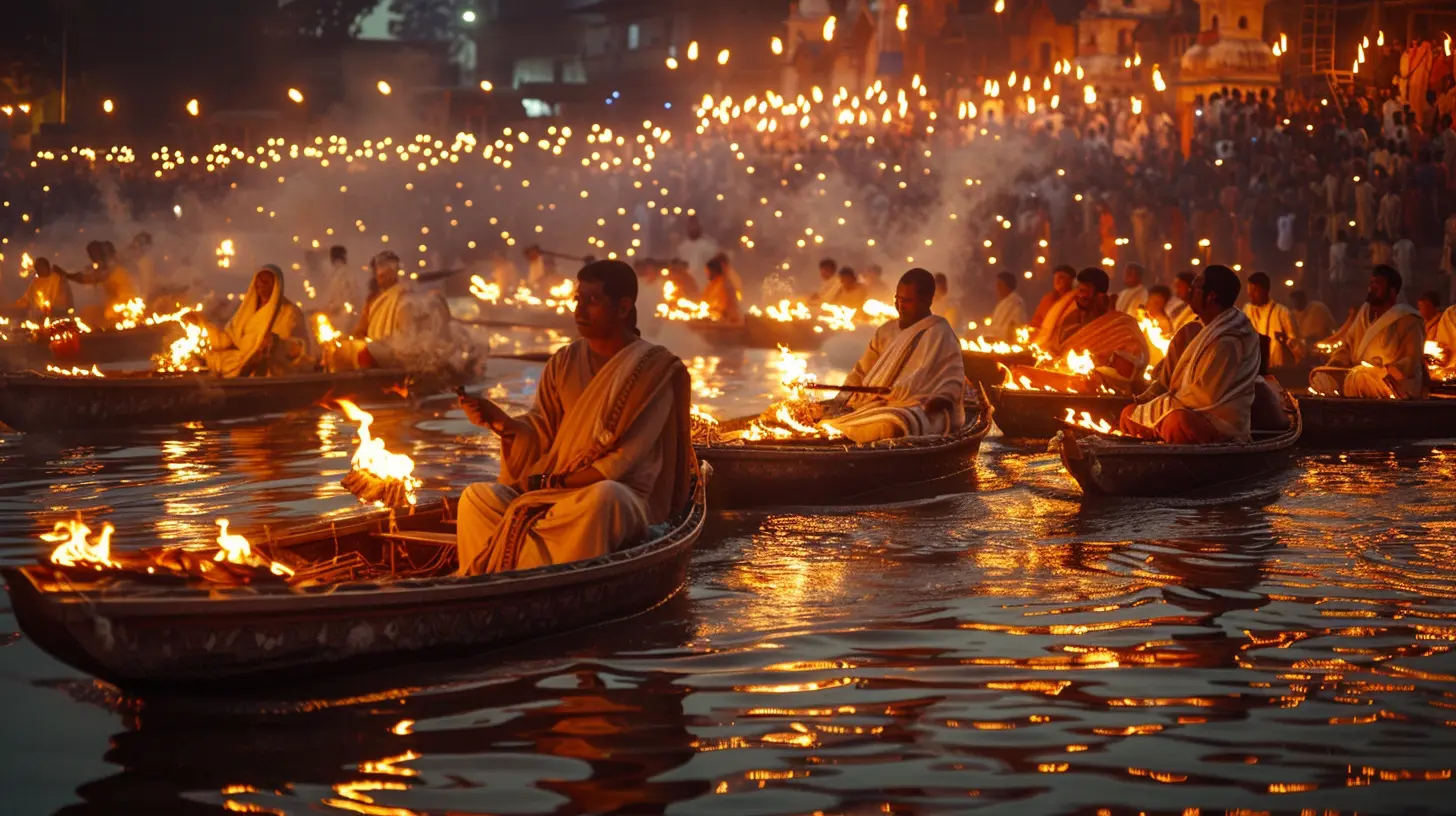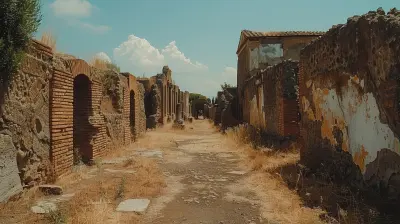Rediscovering Forgotten Festivals of the Past
21 September 2025
Ever find yourself daydreaming about time travel? Imagine hopping into a time machine, popping out in a bustling town square centuries ago, and joining a festival that no one's celebrated in a hundred years. Sounds magical, right? The truth is, the world is full of colorful, peculiar, and downright astonishing festivals that history quietly tucked away. Today, let's dive into the dusty pages of time and shed some light on the forgotten festivals of the past — celebrations that once lit up cities, brought people together, and told fascinating stories about culture, seasons, and beliefs.

Why Do Festivals Disappear?
First off, it's worth asking: why do festivals disappear in the first place? These are events packed with meaning, tradition, and community spirit — so why aren't we dancing in their honor anymore?Well, several reasons. Wars, colonization, economic crises, political shifts, industrialization — the list goes on. Sometimes, modernization just swept them aside. Some were suppressed because they clashed with new religious or governmental ideologies. Others slowly faded as rural communities moved into cities, leaving old practices behind.
And yet, many of these festivals were more than just "big parties." They carried deep spiritual meaning, offered social commentary, or marked critical moments in the agricultural calendar. Losing them means losing pieces of our collective identity.
So, let's dust off history's old suitcase and unpack a few festivals that deserve a comeback — or at least a place in our modern imagination.

1. Saturnalia – Rome’s Original December Bash
You think Christmas is wild? Wait until you hear about Saturnalia. Long before eggnog and gift exchanges, Romans celebrated Saturnalia — a mid-December festival dedicated to Saturn, god of time and agriculture. And it wasn't a quiet affair.Imagine a week-long carnival where social norms flipped upside down. Slaves dined with masters. Gambling was legal. People wore colorful clothes instead of formal togas. And oh yes, gifts were exchanged — sound familiar?
This festival was about joyous chaos, a social pressure release valve before the long, cold winter. Its traditions heavily influenced modern holidays, yet few recognize its roots today. Maybe we could all use a little Saturnalia spirit — minus the Roman chaos, of course.

2. Floralia – Rome's Riot of Flowers
Let’s stay in ancient Rome for a moment. Another lesser-known gem? Floralia — a festival celebrating Flora, the goddess of flowers and spring. Held in late April, it was basically an ancient tribute to rebirth, beauty, and nature’s return.Picture this: women in bright dresses, theaters packed with performances, and the city decked out in blooms. It was sensual, joyful, and a nod to fertility — of both crops and people.
Floralia was so vibrant that some Roman writers criticized it for being "too wild." But honestly, isn't there something magical about a city shaking off its winter blues in a tornado of color and life?

3. Feast of Fools – The Medieval Meme Day
The Middle Ages get a bad rap for being, well, kind of grim. But buried in its cloaks and candles was the fantastically bizarre Feast of Fools. Held during the New Year period, it was a time when junior clergy mocked their seniors, wore costumes, sang lewd songs, and paraded around like kings.Basically, it was medieval satire on steroids. Think of it like a mashup between April Fool’s Day and Mardi Gras, held inside a church. The point? To release tension, challenge authority, and bring laughter into sacred spaces.
Church leaders eventually banned it, calling it "blasphemous." But you have to admire a celebration that let people poke fun at power — even if just for a day.
4. Calan Mai – The Welsh May Day of Mischief
In the green hills of Wales, the start of May once brought the fire-lit celebration of Calan Mai. This wasn’t your average maypole dance. It was an ancient Celtic festival that marked the beginning of summer with bonfires, feasts, magic, and a cheeky dash of courtship.Young men and women would sneak into forests to "collect flowers" (wink wink), while entire villages lit twin fires for good luck and fertility. It was both pagan and playful, connecting people deeply with the land and seasonal cycles.
Sure, modern May Day parties exist, but Calan Mai had that raw, earthy vibe — like the kind of festival that makes you want to dance barefoot under the moon.
5. Bonfire of the Vanities – Burning the Excess
Florence, 15th century — a city awash in art, wealth, and scandal. Enter preacher Girolamo Savonarola, who declared war on worldly excess. His response? The Bonfire of the Vanities.Each February, citizens tossed "sinful" items into massive bonfires — cosmetics, paintings, musical instruments, and even books. Sounds intense, right? It was. People voluntarily burned their luxuries as an act of purification.
This festival was more about fear and self-denial than joy, but its story is a gripping chapter in Renaissance history. It teaches us something powerful: festivals can reflect not just celebration, but collective guilt, fear, or aspiration.
6. Gŵyl Mabsant – The Quirky Welsh Village Festival
Back to Wales we go — this time for a hyper-local party called Gŵyl Mabsant. Each village had its own unique version, honoring a local saint with games, feasts, and folk music. Think of it like a neighborhood block party... if that block was from the 18th century and included sanctioned fistfights.Every Gŵyl Mabsant was different. Some were spiritual, others wildly secular. But all brought people together in riotous fun. Over time, the Church and government frowned upon the excessive drinking and “unholy” behavior, and the tradition faded.
Still, imagine reviving it today — a festival where your hometown gets its own saint's day again. Local pride, folklore, and food? Count me in.
7. Mehregan – The Forgotten Persian Thanksgiving
Before pumpkins and turkey took over November, ancient Persia was celebrating Mehregan — a festival of friendship, harvest, and justice. Dedicated to Mithra, the god of light and truth, it marked the end of the harvest season, much like Thanksgiving.Families gathered, shared food, lit wildfires (safely, of course), and wore their finest clothes — often in warm autumn tones of orange, purple, and gold. They gave thanks not just for crops, but for the bonds that held their communities together.
Though still observed in small pockets today, Mehregan isn't nearly as recognized as it once was — despite its rich symbolism and message of gratitude.
8. Scarlet Sails – A Modern Festival with Ancient Vibes
Okay, this one's a bit of a cheat — it still happens, and it's not that old. But hear me out.Scarlet Sails in St. Petersburg, Russia, traces its roots to a post-WWII children’s book. It transformed into an epic celebration held during the White Nights in June. A ship with billowing red sails glides across the Neva River, fireworks light up the summer sky, and thousands of graduates celebrate their futures.
While not forgotten, it echoes ancient solstice festivals that similarly honored youth, light, and transition. It proves that some ancient vibes never go out of style — they just get modern reboots with better lighting and sound systems.
Can Forgotten Festivals Make a Comeback?
So, here’s the million-dollar question: can we bring these festivals back?Well, we already are — sort of. Across the globe, there's a growing hunger for authenticity, tradition, and local connection. People are reenacting old rituals, reviving historical festivals, and even inventing new ones based on old blueprints.
Social media has ironically helped: what better way to go viral than dressing as a Roman and throwing a Saturnalia-themed bash? Or putting your own twist on Floralia with a spring flower fest in your garden?
Of course, we have to be respectful when resurrecting cultural practices. Not every festival is ours to claim. But when done thoughtfully, honoring forgotten festivals can be a powerful act of cultural preservation — and a whole lot of fun.
Why We Need Old Festivals Now More Than Ever
Let’s face it — the world today can feel disconnected, fast-paced, and a little... robotic. Festivals, especially old ones, give us chances to unplug, come together, and celebrate the beauty of life, nature, and culture.They're like emotional bookmarks in the chaos of life — reminders that once upon a time, people danced in the streets, sang ancient songs, and gathered not for profit or politics, but for pure, human connection.
Bringing back forgotten festivals isn’t just nostalgia. It’s a way of remembering who we are — and who we might become again.
Final Thoughts
From laughing at bishops during the Feast of Fools to honoring the harvest in Mehregan, these forgotten festivals tell us more than just dates and customs. They tell us stories about humanity — our quirks, our communal needs, our search for meaning.So, maybe this year, host your own micro-festival. Light a candle for Flora, share a joke for the Feast of Fools, or sip something sweet in honor of Saturn. The past isn't gone — it's waiting patiently, just a dance, feast, or fire away.
all images in this post were generated using AI tools
Category:
Cultural FestivalsAuthor:

Tracie McAdams
Discussion
rate this article
1 comments
Zareth McFee
Who knew history could throw a party? Let’s don our time-traveling hats and dance with ghosts at these whimsical festivals of yore!
September 22, 2025 at 3:22 AM

Tracie McAdams
Absolutely! History isn't just about facts; it's a vibrant tapestry of celebrations waiting to be rediscovered. Let’s dance through time!


